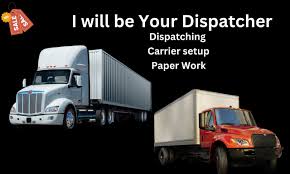Maintaining proper tire pressure isn’t just about comfort—it’s essential for safety, fuel efficiency, and tire longevity. That’s where Tire Pressure Monitoring Sensors (TPMS) come in. These small but powerful devices constantly monitor your tire pressure, alerting you when it’s too low or too high.
Whether you drive daily to work or hit the highway often, understanding TPMS can save you from blowouts, poor mileage, and costly repairs. If you’re upgrading or shopping for new tires and wheels, knowing how these sensors work is just as important as choosing the right tread or rim style.
What Are Tire Pressure Monitoring Sensors (TPMS)?
Tire Pressure Monitoring Sensors, often called TPMS, are electronic devices that measure the air pressure inside your tires. They send real-time data to your car’s dashboard, alerting you if the pressure in one or more tires drops below the recommended level.
The Two Types of TPMS
There are two main types of systems:
-
Direct TPMS – Each wheel has a sensor inside that measures pressure directly and transmits the readings to the onboard computer. It’s highly accurate and common in modern vehicles.
-
Indirect TPMS – This system doesn’t use physical sensors. Instead, it estimates pressure by monitoring wheel speed via the ABS system.
While indirect TPMS can work effectively, direct TPMS offers more precise readings and quicker alerts when a problem occurs.
Why Tire Pressure Monitoring Sensors Are Essential
Ignoring your tire pressure might seem minor, but the consequences can be serious.
1. Safety First
Underinflated tires can overheat, leading to blowouts or loss of control. Overinflated ones reduce grip, especially on wet roads. TPMS keeps you safe by warning you early before issues escalate.
2. Better Fuel Efficiency
Low tire pressure increases rolling resistance, forcing your engine to work harder. Properly inflated tires help improve fuel economy, saving you money every mile.
3. Longer Tire Life
Correct pressure prevents uneven wear, helping your tires last longer and perform better. Replacing tires isn’t cheap, so TPMS helps protect your investment.
4. Environmental Benefits
When your tires are properly inflated, your car burns less fuel and emits fewer greenhouse gases. TPMS is a simple way to contribute to cleaner driving.
How Do TPMS Work?
In vehicles with direct systems, each wheel’s sensor measures air pressure and temperature, then sends the data wirelessly to your car’s computer. When pressure drops below a set limit—usually 25% under the recommended PSI—the TPMS light on your dashboard turns on.
Indirect systems rely on wheel speed sensors. If one tire spins faster (indicating it’s smaller due to lower air pressure), the system assumes that tire is underinflated and triggers an alert.
The beauty of TPMS is that it operates continuously—you don’t need to manually check your tires every week.
Signs of a Faulty TPMS
Even though Tire Pressure Monitoring Sensors are reliable, they can fail or give false readings. Here’s what to watch for:
-
The TPMS warning light flashes for several seconds and then stays on.
-
Incorrect pressure readings appear even after inflating tires properly.
-
A tire feels low, but the dashboard shows normal pressure.
If these symptoms occur, it may be time to replace your sensors.
Replacing or Upgrading TPMS
When you replace or rotate your tires and wheels, it’s crucial to inspect your sensors. Many tire and wheel packages now include new TPMS compatible with your vehicle.
When to Replace Sensors
TPMS batteries usually last between 5–10 years. When they die, the entire sensor typically needs to be replaced. If your system is giving errors or inconsistent readings, a replacement is likely necessary.
Where to Buy Quality TPMS
You can find TPMS at your local tire and wheel shop near me or through reputable online tire stores. Many online retailers also include programming services so that your new sensors arrive ready to install.
Recommended During Wheel Upgrades
If you’re upgrading to custom wheels or ordering from an online outlet to purchase your rims and tires, always include new sensors for best results. Some older sensors may not fit new wheel designs, especially if you’re switching from steel to alloy or vice versa.
The Connection Between TPMS and Tire Performance
TPMS does more than monitor pressure—it protects your tires and enhances your driving experience.
-
Optimal Handling: Consistent pressure ensures predictable grip and cornering.
-
Reduced Wear: Prevents outer-edge or center wear from under/overinflation.
-
Balanced Performance: Keeps braking distances consistent and vehicle stability intact.
When combined with premium tires from best tire brand or wheels from best wheel brands, TPMS makes your setup both stylish and smart.
How to Check and Maintain Your TPMS
Here’s how to keep your system reliable year-round:
-
Check Tire Pressure Monthly: Even with TPMS, use a gauge to confirm readings.
-
Clean Sensor Area During Tire Rotations: Dirt buildup can interfere with readings.
-
Replace Sensors When Needed: Don’t wait for complete failure.
-
Reprogram After Installation: When changing wheels or sensors, ensure your car’s system recognizes them.
Regular maintenance at a trusted tires and wheels service shop can ensure all your sensors function properly.
Buying Tires and TPMS Online
Shopping for new wheels and sensors has never been easier. When you buy wheels tires online, most online tire stores now include TPMS compatibility information. You can even bundle everything into one purchase—sensors, wheels, tires, and mounting kits.
Advantages of Buying Online
-
Convenience: Shop anytime, anywhere.
-
Wider Selection: Choose from hundreds of options, including OEM and aftermarket sensors.
-
Better Prices: Find discounts and seasonal promotions from trusted retailers.
-
Expert Support: Online stores often offer live chat or compatibility checks.
When shopping for rims and tires, always confirm that the package includes TPMS or that your current sensors can be reused.
Common TPMS Myths Debunked
“I don’t need TPMS; I can check pressure manually.”
While manual checks help, TPMS offers real-time monitoring—even while driving. It alerts you instantly to leaks or pressure drops.
“TPMS reduces tire lifespan.”
Incorrect. It actually extends tire life by ensuring consistent inflation.
“All TPMS sensors are universal.”
Not true. Each vehicle requires sensors compatible with its communication system. Always confirm fitment before buying.
FAQ Section
What does the TPMS light mean on my dashboard?
It means one or more tires have pressure outside the recommended range. Check your tires and inflate them properly.
Can I reset my TPMS myself?
Yes, most cars allow a reset through the dashboard settings or ignition sequence. Consult your owner’s manual for instructions.
Do I need new sensors when buying new wheels?
In most cases, yes. New wheels may require compatible sensors to maintain accurate pressure readings.
Are TPMS sensors expensive?
Not at all. Prices range from $30 to $70 per sensor, depending on your vehicle model. Buying them as part of tire and wheel packages often saves money.
Where’s the best place to buy TPMS?
You can find quality options from a tire and wheel shop near me or a trusted online tire store that also sells discount wheel and tire packages.
Final Thoughts
Tire Pressure Monitoring Sensors are your car’s first line of defense against unsafe tire conditions. They help you save money, protect your tires, and stay safe on the road—all with minimal effort. Whether you’re replacing sensors or upgrading your entire wheel setup, don’t skip this essential feature.
Call to Action:
Ready to upgrade your wheels and safety? Visit our online tire store today to buy wheels tires online, explore top-rated tire and wheel packages, and get reliable Tire Pressure Monitoring Sensors for every ride. Drive smart. Drive safe.

